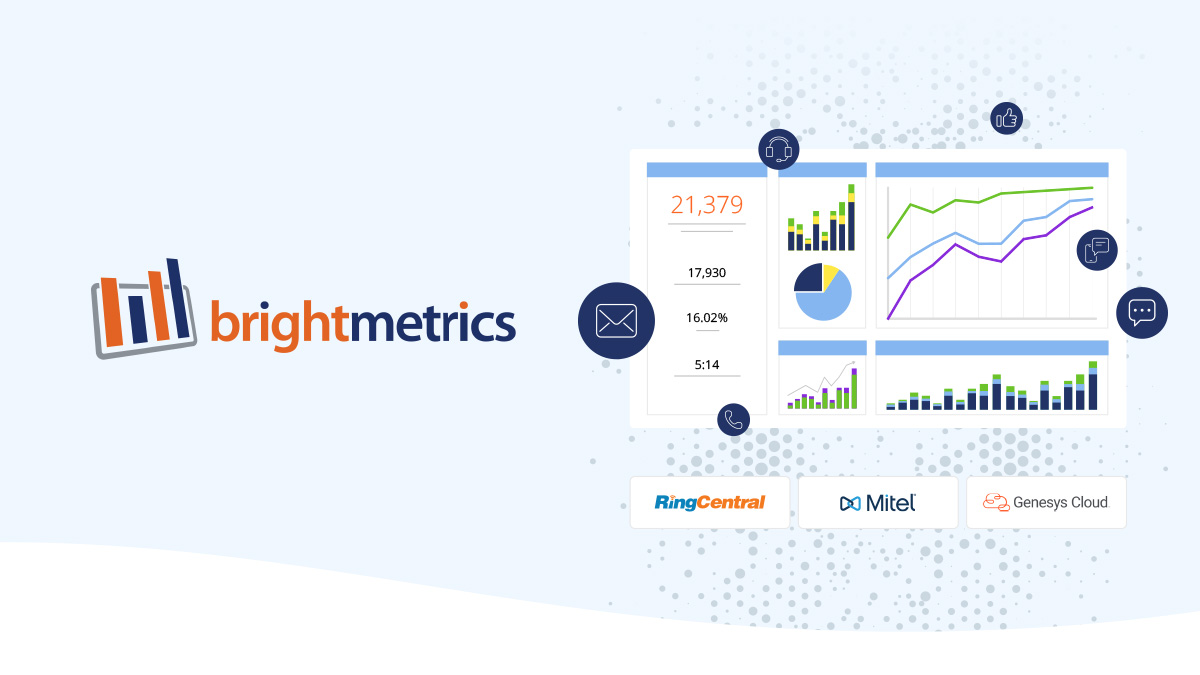Artificial intelligence (AI) has taken the world by storm and is upending business processes. Goldman Sachs recently reported that as many as two-thirds of jobs in the U.S. and Europe are exposed to AI automation in varying degrees. So with the slew of AI for contact center software available, how will it change the current landscape?
In this article, we delve into the impact of AI in contact centers and what it could mean for the future of work in this industry.
Uses of AI in Contact Centers
Artificial intelligence and machine learning are rapidly increasing in popularity for call center and contact center operations. They offer a wide array of benefits, automating various processes and transforming the way customer service centers function. Let’s explore some common contact center solutions that this innovative software enables:
Chatbots
Chatbots, also known as Conversational AI, have quickly become an indispensable customer service solution and a valuable tool for contact center agents. The convenience of customers being able to receive prompt answers to their queries by simply typing into a chatbot is unmatched. This efficiency is further enhanced by AI, empowering chatbots to handle customer questions in multiple languages, catering to diverse customer needs.
Chatbots play a crucial role in reducing the burden on customer service agents. By handling routine and repetitive inquiries, they free up agents’ time and allow them to focus on more complex and critical customer issues. This not only enhances the overall customer experience but also boosts agent productivity and job satisfaction.
Beyond their application as customer service tools, chatbots have proven valuable internally as well. They provide employees with instant access to the company’s knowledge base and other essential resources, promoting streamlined information dissemination within the organization. The self-service options offered by chatbots can also be scaled to support other operations, such as facilitating the onboarding process for new employees or efficiently troubleshooting technical issues.
Interactive Voice Response (IVR)
Gone are the days of frustrating and time-consuming interactions with interactive voice response (IVR) systems, where navigating through a maze of prompts and button presses was the norm. We’ve all experienced the annoyance of answering automated questions with tedious button presses, just to reach a human agent. But why do many call centers still rely on this solution? Well, it’s because, despite its drawbacks for customers, IVR remains a massive time-saver for agents.
However, the game is changing, thanks to AI tools. AI has the potential to revolutionize IVR and create a win-win situation for both customers and agents. The growing adoption of AI and natural language understanding (NLU) in contact centers is making interactions more conversational and customer-friendly. Instead of rigid menu options, AI-powered IVR tools can now engage in natural language conversations, providing a more user-friendly experience.
Moreover, advanced speech recognition technology equips these AI-driven IVR systems to accurately identify and comprehend spoken words. This means customers can interact with the IVR by simply speaking their responses, bypassing the need for touch-tone keypads and making the process smoother and faster.
The benefits of AI extend even when customers are transferred to a human agent. Since the AI-powered IVR system has already gathered relevant information during the initial interaction, customers don’t have to repeat themselves, saving time and avoiding frustration.

Predictive Routing
Imagine calling a customer service center, only to bounce between different agents because the first one you were connected to wasn’t equipped to handle your query. It’s a frustrating experience that can quickly dampen customer satisfaction, leaving you feeling like you’re stuck in a never-ending maze.
Fortunately, there’s a solution that can put an end to this circuitous call routing process – predictive routing technology. This technology harnesses the power of AI’s pattern recognition capabilities to create a seamless and efficient call routing experience. Instead of random or arbitrary assignments, predictive routing intelligently matches callers with the agents best suited to address their specific needs and resolve their issues.
By considering a wealth of data, predictive routing makes highly informed decisions. It considers crucial factors, such as the caller’s information, historical interaction data, customer journey, and even the wait time. It also considers the agent’s profile data and skills. This comprehensive analysis ensures that every call is routed to the most appropriate agent, maximizing the chances of a swift and satisfactory resolution.
Real-Time Coaching
In the world of customer service, empathy plays a pivotal role in delivering outstanding experiences. Recent emotional intelligence AI software tools serve as a personal coach for call center agents during challenging interactions.
By analyzing voice signals and tracking customer sentiments in real-time, agents can adjust their approach accordingly. This type of software also enables team leaders and managers to monitor calls and provide timely interventions when needed, leading to more meaningful interactions and higher customer satisfaction.
Replacing Contact Center Agents: Yay or Nay?
With all the recent interest surrounding AI and its capabilities comes the constant question: will it leave call center and contact center agents out of jobs? And the short answer is no, at least for the time being, because of these 3 reasons:
1. AI Is Only As Good as the Data It’s Trained On
AI uses natural language processing (NLP) algorithms to come up with relevant answers to customer queries. If the AI system trains on biased, inaccurate, or incomplete data, customers will get the short end of the stick.
2. Humans Will Always Crave Connection
AI excels in automating repetitive tasks and providing quick answers to common questions, making it perfect for scheduling appointments and handling FAQs. However, it can’t fully replace the human touch in certain areas.
Contact center agents shine in upselling products and handling disputes, as they bring an essential emotional aspect to customer service that AI lacks. Failing to acknowledge this emotional element can lead to a significant drop in customer satisfaction.
3. Complex Issues Require Human Intervention
AI may also have an issue with understanding the nuances of customer queries. Thus, humans still have to stick around and use AI tools to provide creative solutions to complex issues. For example, resolving disputes may require human empathy, critical thinking, and problem-solving skills — capabilities beyond AI’s scope.
Despite these limitations, organizations will continue implementing AI in contact centers. In this ever-competitive business landscape, brands can’t afford to deny its benefits. Even within the functions that only humans can handle, live agents in contact centers and AI can work hand in hand to deliver speedy response time, increased first-call resolution rates, and better overall customer service.

Is AI Right for Your Call Center?
Does AI offer the right solution for the problems you’re trying to solve in your contact center operation? How do you choose the right AI solution? Here are the best practices when you’re planning to implement AI in your operational strategies:
Define Clear Goals
What issues are you trying to solve? AI’s main selling point is its ability to automate a lot of processes. For instance, you may want to improve productivity, CSAT scores, or first-call resolution rates. You need to set clear objectives to ensure that you choose an AI tool with the right level of automation to meet your goal.
Integrate with Other Tools
Make sure that the AI system works seamlessly with the contact center infrastructure you have in place. The last thing you need is a new tool that disrupts a well-oiled machine. If you’re an omnichannel contact center, make sure that the AI tool integrates well with other interfaces.
Monitor the Impact of AI Tool
Your goals play a crucial role here. It’s essential to consistently monitor progress and make necessary optimizations to ensure that AI is making a significant impact on your operation, justifying its cost.
Analytics Can Help You Understand the Impact of AI
AI’s impact on our daily lives is undeniable, and contact centers and businesses are no exception to its influence. As this technology continues to grow, its pervasiveness is bound to increase in the coming years. Yet, like any emerging technology, AI needs to prove its worth. Robust contact center analytics plays a pivotal role in painting the complete picture and assessing AI’s true potential.
With Brightmetrics, powerful analytics for unified communications and contact center systems, you get access to both historical and real-time dashboards and reports, enabling you to monitor crucial metrics that gauge AI’s impact on your center.
The best part? You can customize the dashboard to visualize essential data, empowering you to make informed business decisions.
Unlock the full potential of your contact center data and gain valuable insights into the impact of AI with Brightmetrics today.




